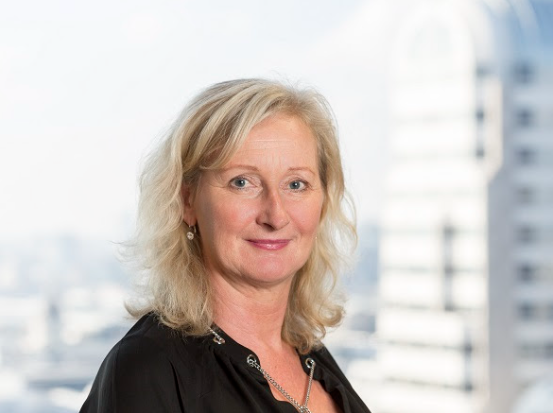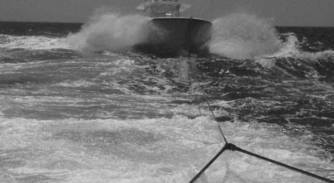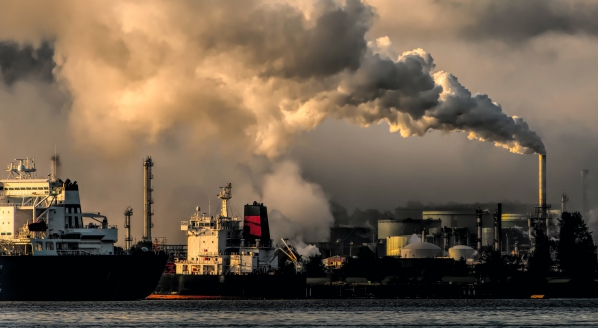Regulation and insurance in a decarbonised future
IUMI calls for mandatory requirements to facilitate the use of green fuels …
The transition to a decarbonised future will involve many, many layers of bureaucracy. Despite not being as headline-grabbing as wild yacht concepts with propulsion systems not yet grounded in reality, the regulatory framework that will underpin any development in this field is the true axis on which this transition will turn. Insurance is tied to class for compliant vessels, and nothing much happens without adherence to both. Disentangling the political, environmental and safety considerations is vital for the industry to move towards decarbonisation.
SuperyachtNews speaks with Helle Hammer, Chair of IUMI Policy Forum, to discuss the developing policy conversation. The International Union of Marine Insurance (IUMI) represents 45 national and marine market insurance and reinsurance associations. As new fuel types such as ammonia and hydrogen are being promoted, their use will need to be properly managed and insured, which requires regulation. IUMI is lobbying for continued development in the sector.

As Hammer explains: “We applaud IMO’s ambition and calls for a decarbonised industry. As marine insurers, it is our job to help shipowners transition to low or zero-carbon fuels safely and with all associated risks fully understood and managed. As these new fuel types are largely untested, the insurance industry has no history or loss records to help it assess the potential risks involved. We need to learn about these new fuels and educate our clients accordingly. As importantly, we need IMO regulation and class rules on the implementation and use of these new fuels. This will ensure the crew's safety and enable marine underwriters to assess and offer necessary financial protection for this new risk profile. Mindful of the time it takes for new regulation to come into force, we urge IMO and other regulators to begin work now”.
Ostensibly, alternative fuels are being pursued by the marine sector to mitigate the existential risk of the climate crisis. However, as Hammer continues, the risk to those involved more directly must be examined urgently. “What we want to do now is try and influence the decision-making process around alternative fuels to make sure it’s not just an environmentally-focused political discussion, and ensure that safety is developed in parallel” As Hammer continues, the industry should not lose sight of those at the coal face of new technological development. “When we talk about superyachts and these fuel systems also, there are many people involved, not just onboard, so their safety is the main concern.”
Staying within class and remaining ensured are co-dependent for commercially compliant superyachts, and that dictates a potentially problematic future for superyachts moving in the direction of alternative fuels. “Any regulation or class requirement will be a safety regulation under an insurance condition as well. Whenever a vessel is in breach of that, they will also not have their insurance cover; and we are now moving into an era that is not fully regulated", Hammer explains.
Two recent submissions to IMO have proposed the development of safety guidelines for new fuel types. European Union Member States and the European Commission proposed to include this in the work plan for the next phase of the development of the International Code of Safety for Ships using Gases or other low-flashpoint Fuels (IGF Code) as a new output under the Maritime Safety Committee, Japan, Singapore, the International Chamber of Shipping (ICS) and INTERCARGO have proposed to develop guidelines for the safety of newly built vessels using ammonia as fuel. As reiterated in a statement to the public, IUMI believes that guidance is also needed to educate and train crew on board and address safe and environmentally sound operations.
As Hammer also outlines, while any movement towards more optimistic decarbonisation targets is a positive step for the environment, the regulatory goalposts may be forced to shift in step. As an industry, we should be ready to adapt. “The discussions are ongoing, and the Maritime Environmental Protection Committee is discussing the new strategy on how to move forward, but it is hard to know exactly where it will end up in the future. At the moment, it is a 50 per cent reduction by 2050, but that may go all the way up to 100 per cent, which then will obviously force the development of regulations to speed up significantly”. And, as Hammer continues, we can't lose sight of the safety of those who are at the most risk: “It is nothing against any of the very positive developments around decarbonization, but we can’t compromise safety.”
The operation of a variety of Scandinavian hybrid battery-powered ferries is often lionised as an example of a proof of concept for what is possible from propulsion. But, as with any pioneering application of technology, there is a risk, as Hammer elaborates: “A relevant example was the Ytterøyningen ferry fire in 2019. The fire was extinguished, but 24 hours later, there was an explosion. Luckily there was no one on board, but this is something we don’t see in other incidents.”
The development of alternative fuels in the marine sector is encouraging, and the superyacht sector is well placed to benefit from advancements in the commercial industry. There is a relatively insular opinion within the superyacht industry, namely that we are the pioneers. But the driving force behind the regulatory underpinnings of a decarbonised future will likely come from an industry-wide collaboration led by the commercial sector. As Hammer concludes: “Environmentally friendly fuels carry their own risks, ammonia is both toxic and corrosive, and hydrogen has a wide flammability range and ignites easily. We welcome the proposed safety guidelines as a useful starting point. However, they are non-mandatory and can only be an interim measure. We urgently need mandatory requirements to be developed and implemented to facilitate the transition to greener fuels.”
NEW: Sign up for SuperyachtNewsweek!
Get the latest weekly news, in-depth reports, intelligence, and strategic insights, delivered directly from The Superyacht Group's editors and market analysts.
Stay at the forefront of the superyacht industry with SuperyachtNewsweek
Click here to become part of The Superyacht Group community, and join us in our mission to make this industry accessible to all, and prosperous for the long-term. We are offering access to the superyacht industry’s most comprehensive and longstanding archive of business-critical information, as well as a comprehensive, real-time superyacht fleet database, for just £10 per month, because we are One Industry with One Mission. Sign up here.
Related news

Aston Lark acquires ES Risks
ES Risks explains the motivations behind the acquisition and a number of developments in the yachting market
Business

Bosch plans fuel cell push – will the superyacht industry take note?
Following Bosch's plans to invest €1bn in the technology, Justin Olesinski discusses the significance for yachting
Technology

Leading insurers back advanced tow protection
With tender losses accounting for one in three claims, leading insurers are backing preventative technology
Business

Lürssen to install first hydrogen fuel cell on a superyacht
The new technology should make it possible to anchor emission-free for 15 days or cruise 1000 nautical miles at a slow speed
Technology

Greener yachts and shipping: a look over the horizon
IRI's Marc Verburg on a shifting regulatory landscape and the growing environmentalist imperative
Business
Related news
Aston Lark acquires ES Risks
4 years ago
Leading insurers back advanced tow protection
4 years ago
NEW: Sign up for
SuperyachtNewsweek!
Get the latest weekly news, in-depth reports, intelligence, and strategic insights, delivered directly from The Superyacht Group's editors and market analysts.
Stay at the forefront of the superyacht industry with SuperyachtNewsweek



